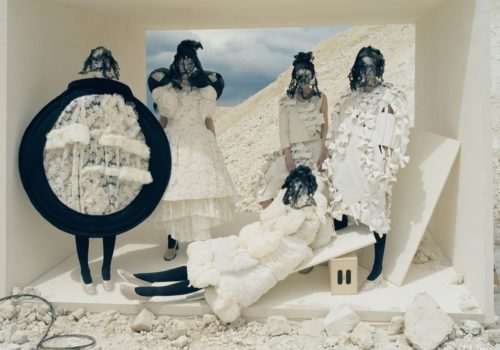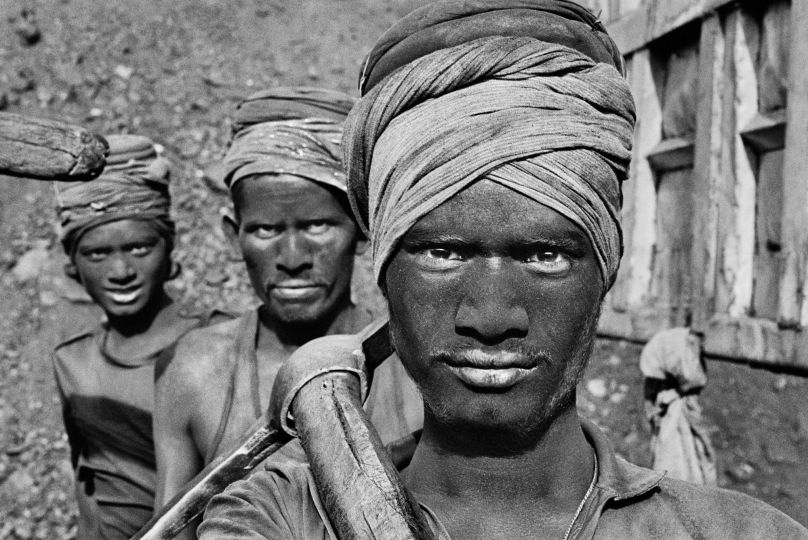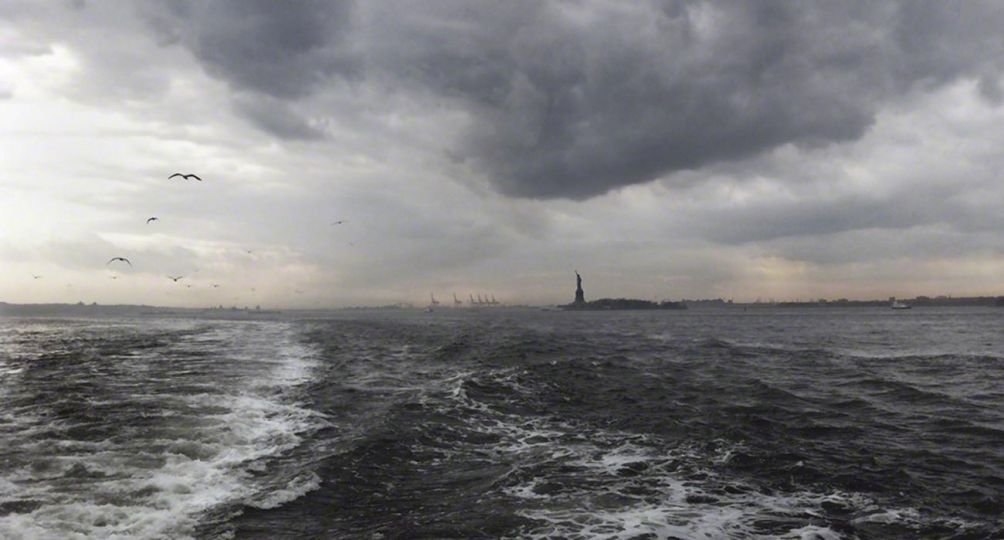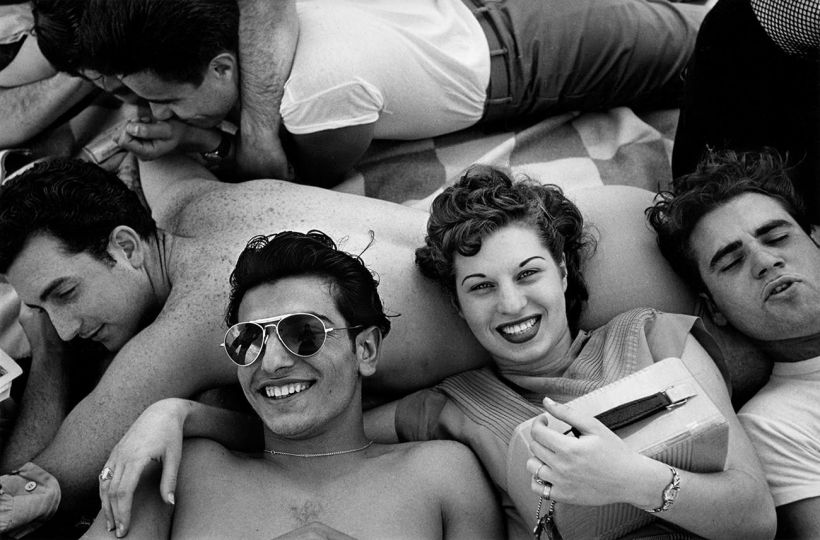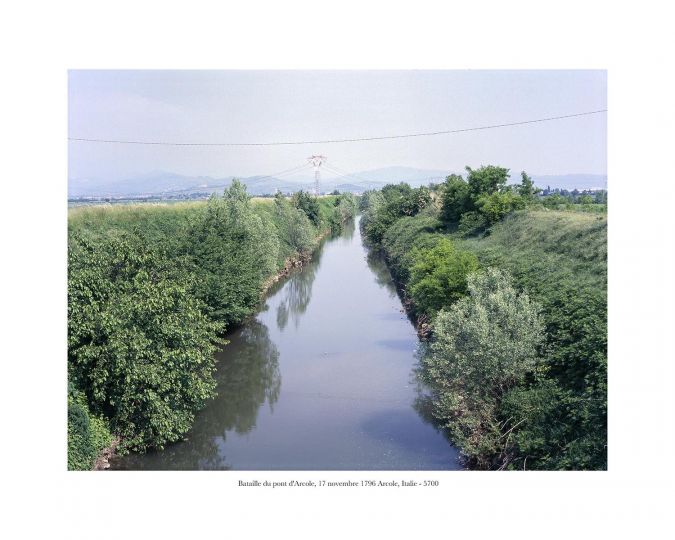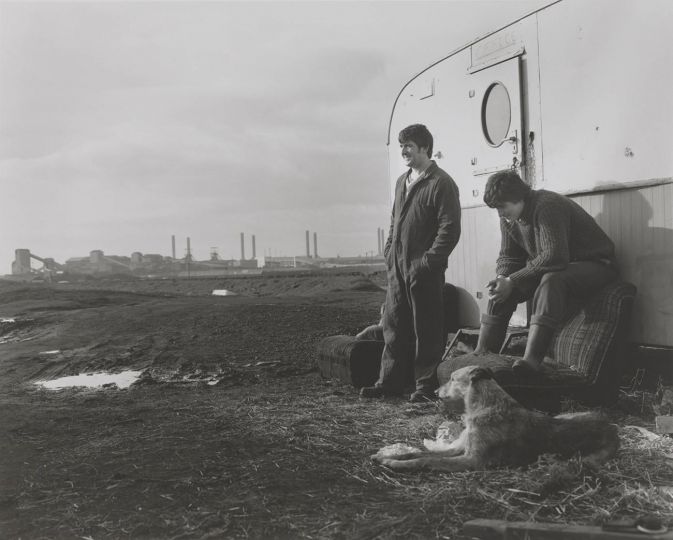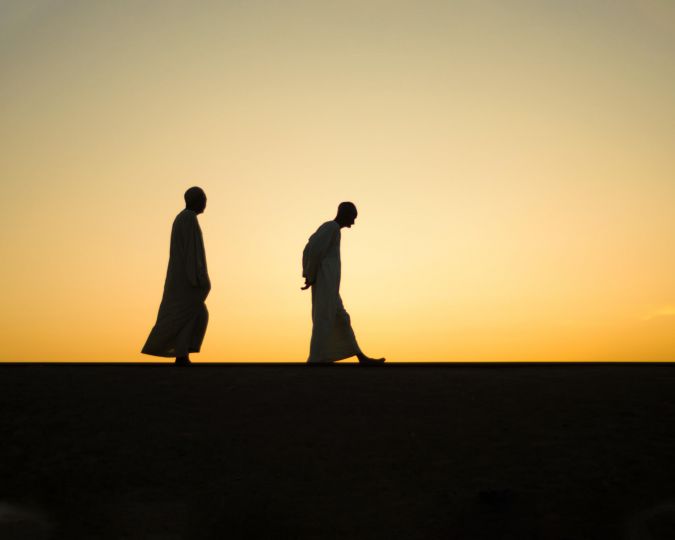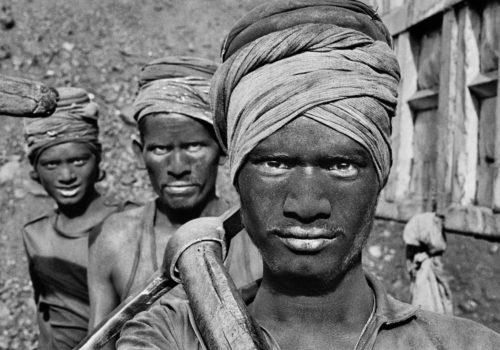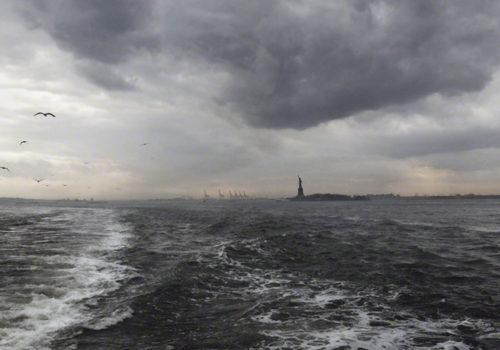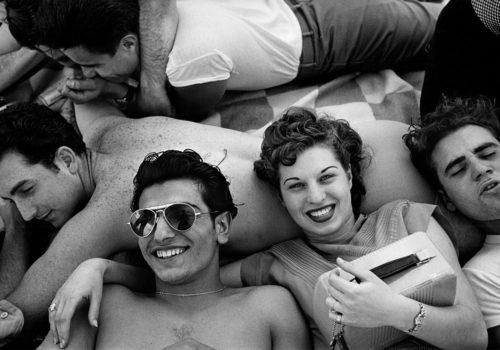Succeeding Peter Knapp, William Klein, and even Erwin Blumenfeld, Tim Walker is being honored at the Villa Noailles, in Hyères, where he is presenting The Mirror, a series made over the past four years. Specially conceived for the Festival of Fashion and Photography, the exhibition beckons the iconic Jean Cocteau and gives the British photographer a framework to match his flamboyant imagination. For The Eye of Photography, he reflects on his career and complex relationship with the fashion industry.
Can you remember when you first picked up a camera?
I was about 12 or 13 maybe younger. I borrowed my father’s camera and I started quite naturally photographing fields, trees and things around me. The technicality of the camera always scared me a little bit until I understood it was just a box between myself and what I wanted to capture.
When did you start reading fashion magazines?
I was a teenager when I started noticing the language of fashion photography. My parents sent me to a boarding school and I remember all the children my age putting posters on their bedroom’s wall. Mostly movie stars or sport celebrities. Mine was covered with fashion pictures. It wasn’t about women or clothes it was more the idea of a fantastical story that interested me. I could already see that fashion photography was probably the only way for me to tell a story.
To what degree your work on Cecil Beaton archives has influenced your own vision? Do you consider yourself in some ways heir or custodian of a certain tradition of fashion photography?
You don’t want to be an echo. You want to be a voice in your own right even if you know it’s not possible. Art is a universal language, living, breathing, evolving. You’ll always find someone to inspire you, to invite you to make unexpected and surprising associations and that’s fine. Beaton is my absolute reference. I think I understand him very deeply. The discovery of his archives has been the best educational background. He has developed such a sense of playfulness, a unique blend of ingredients. He’s the source of all I learned and this bridge to the past has been essential at some point to validate my artistic choices.
Do you use historical fashion photography to shape your idea of a shoot?
I definitely thing about the mood, the set. I imagine Cecil Beaton bringing models to his house in Wiltshire. The light, the flowers, the way the garden look in April… Peonies always make me think of Cecil Beaton, lilies of Mapplethorpe, roses give me Irving Penn. Everything is a sign you can play with. The world around us is an enormous reservoir one can tap into in order to create something completely new.
What are your main source of inspiration?
Just living. Having a conversation or reading a book. People, weather, nature, animals, colors inspire me. Recently I did a shoot based on Francis Bacon’s work because I wanted to do male nude
A lot of links and inspiration come from your childhood and your reluctance to give it up. It’s often nostalgic, sometimes even dark but at the same time not sentimental. What are you afraid to lose as an adult?
It’s hard to say. It’s almost an unconscious reaction. You lose a lot of your innocence, your sense of wonderment as you mature, but if you lose it completely you couldn’t possibly be a photographer. You need that sense of curiosity, a willingness to play games, with a kind of freshness. You need to see everything as if it were the first time.Adults no longer have time, we’re all so busy. A child has a lot of time to wander and daydream. I am continually blown away by the richness of life.
What was your childhood like?
I was a happy and privileged child; I grew up in a warm and caring family and I think that kind of loving background has allowed me to approach life with an open and playful eye.
Do you have a definitive idea in your mind when you arrive on the set? Is there a place for improvisation?
I know precisely what I want. It’s in my head. I can see pictures. I have sketches and storyboards but obviously, 90 percent of the time It doesn’t work. When you force a photograph to be what you want it to be the result is often stiff or artificial. What I find very useful is to keep my script and the very specific mood I want in mind and to stay open to what other people could bring. Hopefully… everything will go wrong, will collapse. It’s only in the mistakes that you can find life. There’s no formula. It has to be vulnerable, insecure, out of control. Beauty comes from danger. That’s why I like working with people who intimidate me. Being in front of Cate Blanchett, such an immensely intelligent and humanly powerful woman kicks my creativity. I get addicted to this energy.
You said working with Avedon taught you a lot on how to communicate with sitters? How do you direct your models?
It was an invaluable lesson in how a photographer communicates with a sitter. Avedon was very clever; he was a master of communication. Fashion photography is very posy and shallow. He taught me that models are not mannequins. You have to give them a character to play. He could see two models come into the studio both wearing black skirt and he’d go, “You’re two black crows sitting on a branch and the branch has fallen.” He’d give them stories to play out in a very spontaneous way and that why his photographs are probably so memorable.
Which part of your work interests you the most?
It changes all the time. If I’m doing a portrait. Everything starts and ends with the person and the success of the picture depends on this strange and intense relationship with the subject. The camera gives me a reason to be inquiring, curious about someone in a very short amount of time. It always fascinates me, how a camera can reveal secrets and fragilities. When I work with Kate Moss who’s considered like the great beauty of our time, I’m always astounded by her total vulnerability.
Your work involves the viewer as much as it does the model, or even yourself. What role do you think the viewer plays in the production of an image?
As a photographer, I just want to delight myself and I hope the viewer will feel the same. And it seems to be the way. On the other hand, I’m aware that I have a big responsibility: How you represent women, people of color, genders. I’m trying to be as honest as I can. You cannot manipulate or lie in true art. When the world is questionable, it’s a natural human response to seek out truth and look back to the most basic human expression of beauty.
You spoke a lot about the mythology of your inspiration, imagining photography as “a secret room” which you may find only when your “intentions are true”. How do you bring fashion into this idea without compromising its integrity?
All my commercial work is less genuine but even in artifice there’s a part of truth. I’m never been motivated by the wheel of fashion and commerce. Even though I can still be a professional who represent a product that someone wants to sell and have my point of view on it. In a work that I do for myself, it’s very much about having true intentions and really believing in it. Commissioned or commercial work can be very challenging but the financial reward gives me the ability and the confidence to photograph something when there’s no money.
You’re very critical about the dictates imposed by the fashion industry. How do you manage to find the right balance between your personal inspiration and your commissioned work?
Fashion is something that’s not my leading direction as a photographer. I don’t actually care for fashion, but I do care about beautiful clothes. There are many ways of finding one’s own « middle path » without being lost along the way.
Your current work is less about lush tableaux and more about stripped-back portraits. How would you say your work has developed through the years?
Very slowly. If you are fortunate enough to acquire a style that is recognizable, you end up taking the same 10 pictures for the rest of your life, even if you think it’s a new picture. Don’t fall into this trap. A set is an exquisite world where it’s easy to hide. With the money, I won from my commercial work, I bought a studio in London. It’s just a white space and I absolutely love it. It’s important to go out of your comfort zone if you want to keep a fresh mind.
You made your first short movie The Lost Explorer seven years ago. Was it a challenge to adopt a new medium?
It was so hard. It nearly killed me. Financially crippling. I don’t think I’m a good film maker. The craft of making film is too different. I’m too shy, unconvinced, floating, chaotic. A film director is like a commanding officer during a war. It’s too heavy for me. Photography seems to be effortless and I can get through it in a very light way now that I reached that level I’m so comfortable with myself.
Stefano Tonchi, the editor in chief of W says that you’re the last of the great romantic fashion photographer. Do you agree with him?
Photography is at a crossroad and I don’t know what will happen but I hope there will always be room for poetry, vulnerability, emotion. That’s my definition of romantic.
You often say that you love the inherent imperfection of all human beings. From the beginning, you wrestled with the narrow beauty ideals of fashion images. What’s your definition of beauty?
Beauty has nothing to do with the stereotypical fashion model that I find really boring. Fashion has taken an increasingly conservative path. Everybody can have an immense talent in front of a camera. Representation of unique beauty really fascinates me. I worked with women like Stella Tennant, Tilda Swinton, Kristen Mc Menamy, Karen Elson once considered ugly and now recognized by the fashion industry as great beauties.
How do you draw out the essence of a person?
I couldn’t just photograph someone on face value. I have to connect to people to understand them or I might be missing the most exciting aspect of that individual. I’ve always been like that. I need to speak to people and engage with them. A portrait is the meeting of two points of view. The subject and the photographer walked down on a long pathway of phone conversations, discussions and finally they meet half way and shake hands. It’s a bit like an agreement. A two-way process.
Could you say a few words on the series displayed at the villa. What affinity is there between your work and Jean Cocteau’s?
Jean Cocteau was such a powerful image maker. He is an international touchstone for lots of artists. From a very young age, he fascinated me. As an Englishman, he seems so incredibly sophisticated and naïve at the same time. Like Beaton, he had this ability to turn a page of blank paper into a sculpture of exquisite beauty. When the festival first approached me, I was working on a series with Emma Watson who was playing in Disney movie the Beauty and the Beast. I was completely immersed in Jean Cocteau’s movie, his wonderful settings and magic lighting. It was such a perfect timing!
Some of your photographs are part of the permanent collections of two major institutions. Do you draw the line between what you might call “art photography” and fashion photography?
Only time decides. Time is the great decision maker. Irving Penn’s show just opened at the MET. It’s art undeniably. The idea of labeling photography has always seemed a bit odd to me. You can call me a fashion photographer but I don’t make distinctions between the various forms photography may take.
Interview by Cathy Rémy
Cathy Rémy has been a journalist at Le Monde since 2008, where she features the work of young photographers and emerging visual artists. Since 2011, she has contributed to M Le Monde, Camera, and Aperture.
Tim Walker, The Mirror
April 27 to May 24, 2017
Villa Noailles
Montée de Noailles
83400 Hyères
France

